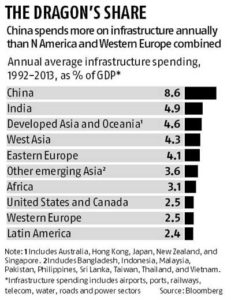
India’s consumer confidence is highest compared to other emerging market peers despite the near-term sentiment being adversely impacted by the Centre’s demonetisation move, says a survey.
According to the Credit Suisse Emerging Consumer Scorecard, India has the highest consumer confidence score among the eight emerging markets surveyed — Brazil, China, India, Indonesia, Mexico, Russia, South Africa and Turkey — while China slipped to third place.
India’s buoyant consumer sentiment was supported by consumers’ greater confidence in their current and future finances, as well as relatively lower inflation expectations.
India saw strong improvement in personal finances expectations; a net 47 per cent of the respondents expect the state of their personal finances to improve over the next six months, up from 27 per cent in last year’s survey.
However, only 57 per cent of respondents thought it was a good time to make a major purchase, a sharp drop compared to 80 per cent last year.
“A further 10 per cent of surveyed households have succeeded in entering middle income territory in last three years. This creates a consumer base of 1.25 billion people across eight countries covered, confirming the significance of emerging consumer story and growth opportunity for investors,” said Richard Kersley Head of Global Equity Research Product and Thematic Research at Credit Suisse.
The report said combined effect of demonetisation and GST will help to drive the adoption of non-cash payment modes by consumers and will likely lead to acceleration in the switch to consumption of branded goods.
The government in November last year had announced the demonetisation of Rs 500 and 1,000 currency notes to crack down against black money and terror financing.
The survey also said, as the emerging market consumer has developed, local brands are increasingly gaining leading market share in lucrative consumer segments previously the preserve of large global brands owned by Western multinational companies.
Source: http://economictimes.indiatimes.com/articleshow/57920862.cms


